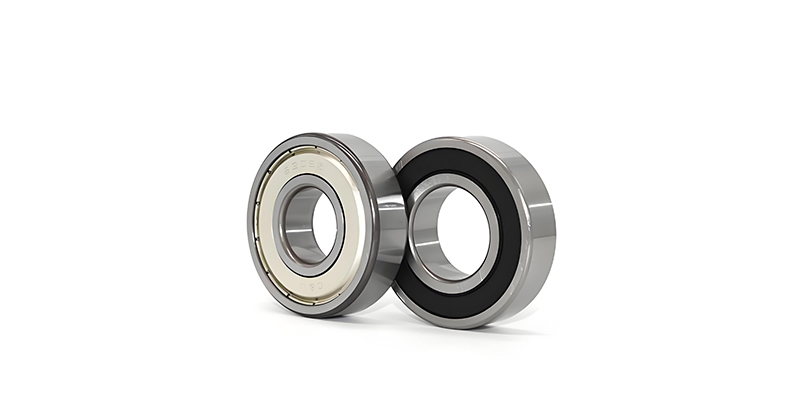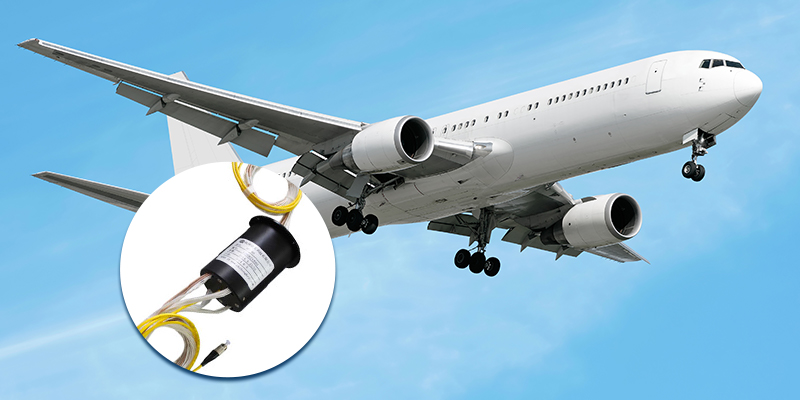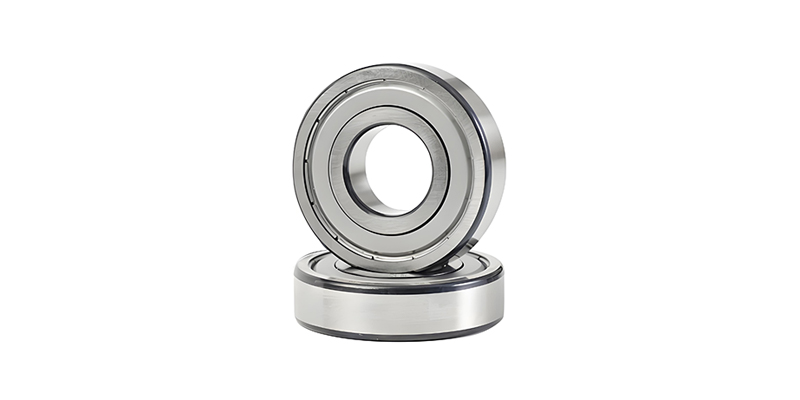In an era of ever-evolving technology, few components play as imperative a role as slip ring bearings. These unseen heroes feature in countless applications ranging from wind turbines to industrial equipment, ensuring seamless operation and longevity. The world of slip ring bearings is both fascinating and complex — that’s where this comprehensive guide comes into play.
As an essential part of the slip ring assembly, bearings reduce friction, maintain system rigidity, and uphold the performance of various pieces of equipment and machinery. This widespread usage underscores not only the technological importance of these components but also their significance in ensuring the smooth running of everyday operations. However, their underlying complexities and intricacies often go unnoticed. This guide aims to bring to light the incredible world of slip ring bearings, unraveling their functionalities and importance across numerous applications.
Imagine a wind turbine perched high above the ground, its blades rotating majestically, or an assembly line robot performing its complex tasks with precision — in each case, slip ring bearings play a crucial role in ensuring smooth and efficient operations. When it comes to the functionality of these bearings within diverse systems, one needs to understand not just the mechanics of their operation, but also their structure, the materials used in construction, and the intricacies of their design.
Drawing from the expertise and understanding of professionals in the industry, this guide aims to unravel the science behind slip ring bearings. It provides both a detailed explanation of their workings for those operating in related fields and an insightful overview for the uninitiated, explaining their significance in the technological landscape.
By taking a deep dive into the incredible functions and features of slip ring bearings, we invite you on a journey to truly appreciate these technological marvels and their far-reaching impact across numerous disciplines and applications.
The Role and Importance of Slip Ring Bearing
In the world of machinery and equipment, performance and efficiency are vital. A single component’s role can significantly affect a system’s overall operation, and slip ring bearings are no exception. Diminutive yet incredibly efficient, these components work diligently behind the scenes, contributing greatly to the wide range of applications in which they feature.
The beauty of a slip ring bearing lies in its simplicity: its main function is to support and reduce friction within the slip ring assembly, a device used to transmit power and data between stationary and rotating parts, prevalent in various machinery. By doing so, these bearings ensure that slip rings can turn smoothly, maintaining an unfailing electrical connection irrespective of the system’s orientation or rotational speed.
But the role of a slip ring bearing goes beyond merely reducing friction; it also upholds the structural integrity of the assembly, sustaining the rigidity of the rotating system. Consequently, it is pivotal in preventing unwanted lateral movement or wobbling. This preservation of rigidity plays a critical role in machine stability, contributing to the system’s efficiency and longevity.
The importance of slip ring bearings becomes particularly evident when considering the repercussions of their absence. Without these components, the friction and wear within an assembly would increase dramatically, hindering rotation and degrading the transmission of electrical signals, ultimately resulting in system failure. In essence, they are the unsung heroes ensuring the smooth, uninterrupted functioning of various applications in different sectors, from renewable energy and automation to maritime and aerospace systems.
As we dive deeper into the functionality of slip ring bearings in subsequent sections, bear in mind the all-encompassing influence of these diminutive components on machinery’s performance. Helping to reduce friction, maintain rigidity, and prevent wear and tear, slip ring bearings stand out as valuable assets in any system – worth their weight in gold for a seamless and efficient operation.

Basics of Slip Ring Bearings: Design, Construction and Types
To comprehend the importance and operational excellence of slip ring bearings, it is essential first to glimpse their design, construction, and the different types available. Each aspect of these crucial components results from careful consideration, engineering precision, and extensive knowledge.
1. Design and Construction
The design process for slip ring bearings is meticulous, requiring a blend of mechanical engineering and electrical theory. The construction of these bearings is ingeniously simple yet brilliant. At their core, slip ring bearings consist of two essential parts: an inner and an outer race, fitted with caged rolling elements in between. By enabling these parts to rotate with minimal friction, the bearing ensures the efficient operation of the slip ring assembly.
During the design stage, a manufacturer must consider several technical aspects: required load capacity, speed limitations, and intended lifecycle. These considerations help determine the bearing’s size, configuration, and the necessary materials for its construction. The choice of materials should balance optimal performance with durability, often with stainless steel, ceramic, or even brass being popular selections due to their remarkable wear resistance and thermal properties.
2. Types of Slip Ring Bearings
As technology has evolved, so too has the variety of slip ring bearings, each suited to specific applications. Understanding the differences among various types is critical to choosing the most suitable bearing for any given situation:
- Ball Bearings: Recognized for their low friction and easy installation, ball bearings are the most commonly used type within slip ring assemblies. Designed to handle both radial and axial loads, they offer a balance between performance, ease of use, and cost-effectiveness.
- Roller Bearings: Where greater load capacities or extended lifecycles are needed, roller bearings step into the spotlight. They are designed to handle a larger loading capacity and deliver higher durability compared with their ball-bearing counterparts, which is why they are often found in heavy-duty machinery and equipment.
The choice between these types of bearings ultimately depends on the specifics of the application, making the understanding of each type’s unique features and strengths an invaluable insight.
Through this deeper understanding of the design, construction, and types of slip ring bearings, one can appreciate the engineering marvel behind these components and the significant influence they exert on a well-optimized system. As we proceed further, we’ll observe more closely the diverse range of applications where these bearings prove themselves indispensable.
Navigating Key Applications of Slip Ring Bearings
Slip ring bearings come into play in an astonishing array of applications across multiple industries. Their intrinsic design characteristics, enabling the smooth turning of mechanisms while ensuring electrical continuity, make them invaluable components in any sector where rotation and data or power transmission interact. Let’s take a deeper look into the applications across different fields:
Wind Energy
The wind energy sector, one of the fastest-growing renewable energy sources worldwide, heavily relies on slip ring bearings. Inside a wind turbine, the nacelle (the housing that contains the energy-generating components) rotates to face the wind direction while standing atop a stationary tower. Slip ring bearings in these scenarios provide critical support, enabling seamless power and data transmission between the rotating nacelle and the stationary part of the turbine. This essential interaction makes continuous energy generation possible, regardless of the wind’s direction.

Automation
Automation systems and robotics demonstrate another area where slip ring bearings are essential. Industrial robots, particularly those involved in assembly line processes, often possess “joints” that must rotate freely while maintaining the flow of power and signals to and from its other components. Slip ring bearings here play a dual role — ensuring smooth rotation and enabling an uninterrupted transfer of electrical signals, vital for these machines’ proper functioning.

Maritime
Whether in shipboard systems or advanced subsea exploration equipment, slip ring bearings perform a pivotal role. They help facilitate uninterrupted signal transmission between stationary and rotating parts, even under adverse conditions. This connection ensures smooth and reliable operation, critical for maintaining safety and operational efficiency in maritime situations.
Aerospace
In the realm of aerospace, slip ring bearings find crucial applications. They exist in numerous systems, including radar antennas requiring constant rotation for scanning purposes, satellite communication systems for maneuvering antennas toward target satellites, and in-flight control surfaces to relay sensor data. Here, the bearings ensure the flawless transmission of power and signals while withstanding extreme operational conditions.

By integrating their operational prowess into these diverse applications, slip ring bearings serve as the linchpin ensuring seamless operations. Their influence extends beyond these sectors, helping shape technological progress and advancements in the modern world. As we delve deeper into the world of slip ring bearings, the appreciation for their versatility and indispensability becomes ever more apparent.
Essential Considerations When Selecting Slip Ring Bearings
The selection of the appropriate slip ring bearing is not a mere off-the-shelf exercise. It necessitates a more nuanced approach, ensuring that the chosen component will optimally satisfy the application’s specific requirements and constraints. In this section, we delve into some of the key factors to consider when selecting slip ring bearings:
- Durability and Performance: A critical aspect to consider during selection is the bearing’s durability, closely linked to its performance over time. The client should consider the operational life expectancy of the machinery or system, its intended frequency of use, and whether the bearing can withstand this continuous usage without component failure. A durable bearing lends itself to consistent performance and reduced maintenance costs, boosting the overall productivity of the application.
- Size Constraints: The physical dimensions of the pre-existing slip ring assembly can limit the size of the bearings used. Understanding the size constraints is a prerequisite to ensure the bearing will fit and function efficiently—hence, considering factors like inner diameter, outer diameter, and width become significant while selecting these bearings.
- Environmental Factors: The environment in which the bearing operates heavily influences its selection. Factors such as temperature extremes, potential exposure to corrosive substances or water, and the necessity for the bearing to be sealed all play a part. For instance, ceramic bearings might be more suitable in corrosive environments because of their superior resistance to chemical corrosion.
- Cost: Financial factors can play a determining role in bearing selection. Clients need to weigh the initial cost of the bearing against the lifetime value it provides. While some bearings may be more expensive initially, their longer life span, lower maintenance requirements, or superior performance can prove more cost-effective over time.
By considering these factors in the selection process, clients can ensure that they select the most suitable slip ring bearing for their specific application requirements. Furthermore, this selection directly influences the overall performance and efficiency of the system, validating the importance of thoughtful bearing selection. As we continue to explore the world of slip ring bearings, the intricate intertwining of multiple considerations within the selection process emerges with increased clarity.
Impact of Material Choice on the Performance of Slip Ring Bearings
The choice of material exerts a profound influence on the performance and longevity of slip ring bearings. Just as artisans select their medium with care, so too must engineers when it comes to bearings. They must account for attributes such as thermal conductivity, wear resistance, and anticorrosion properties to ensure optimal performance and enhanced lifespan. Here, we offer a closer examination of how these individual factors are impacted by material selection:
- Thermal Conductivity: For slip ring bearings, the material’s thermal conductivity plays a crucial role, especially when the assembly operates in high-speed applications. Materials with good thermal conductivity can efficiently dissipate heat accumulated during operation, preventing overheating and avoiding damage to the bearing and surrounding components. Metals like brass and bronze, renowned for their thermal conductive properties, are common choices for bearings that must function under high-speed conditions.
- Wear Resistance: Slip ring bearings, by nature of their role, are subject to constant friction, which can lead to wear and tear over time. Materials with high wear resistance can help to counter this issue, prolonging the bearing’s operational life. Stainless steel and ceramic are often favored for their high wear resistance, each offering a worthy defense against the relentless grind of routine operation.
- Anticorrosion Properties: In environments prone to water exposure or corrosive substances, the bearing material’s anticorrosion properties become crucial. It’s vital to select materials that can resist rust or chemical corrosion to preserve the bearing’s integrity and, consequently, its performance. Stainless steel and ceramics have exceptional anticorrosion properties, safeguarding the bearing from premature failure due to corrosive damage.
As this exploration has divulged, the choice of material shapes the entire narrative of a slip ring bearing’s performance and lifespan. It is in this material selection where the nuances of engineering brilliance truly gleam, guiding the bearings toward a future of operational excellence. Our continuous journey into the realm of slip ring bearings gives rise to a greater appreciation for these seemingly inconspicuous components and the pivotal role they play within various systems.
Slip Ring Bearings: Installation, Maintenance, and Troubleshooting
The journey of a slip ring bearing doesn’t end at its selection and purchase. Its life story extends into installation, regular maintenance, and, occasionally, troubleshooting if problems arise. Here, we provide some insights and practical advice to guide users through these essential stages:
Installation:
Proper installation is the cornerstone of a bearing’s successful operation. Regardless of the type you choose, consider these common guiding principles:
- Cleanliness: Any foreign particle can affect the bearing’s performance. Ensure the environment and tools are clean before the installation process.
- Handling: Handle the bearings with care. Any shock or impact can lead to latent damage, affecting their performance.
- Alignment: During assembly, accuracy is key. Lack of proper alignment can cause irregular friction and subsequently reduce the bearing’s operational life.
Maintenance:
Routine maintenance helps to ensure the longevity of slip ring bearings and keep them in optimal working condition. Major elements to consider are:
- Periodic Inspection: Regularly check for signs of wear and tear, corrosion, or any abnormal noise which might suggest internal issues.
- Lubrication: Depending on the bearing type and usage conditions, ensuring appropriate lubrication is essential in reducing friction and offering a longer service life.
- Cleaning: Keeping the bearings clean can prevent foreign particle interference and potential damages.
Troubleshooting:
Having effective troubleshooting methodologies in place is crucial for users to identify potential problems quickly and accurately. Some effective strategies include:
- Error symptoms: Be on the lookout for any unusual noises, slowdown, or excess heat generation—these could stand as symptoms of bearing problems.
- Root Cause Analysis: Determining the root cause can be instrumental in resolving issues. Is the problem due to excess load? Inadequate lubrication? An improper installation? Ask the right questions to get to the root of the problem.
- Proactive resolution: Swiftly acting upon identifying the problems can prevent further damage to the bearing, or the larger system it forms a part of.
Mastering these components of bearing management positions users to leverage the full potential of their slip ring bearings. Whether you’re installing, maintaining, or troubleshooting, these principles grant you the tools to ensure their performance remains optimal over their functional lifespan. We continue to broaden our understanding of slip ring bearings, highlighting the impact of these small components in shaping our technological landscape.
Innovations and Future Trends in Slip Ring Bearing Technology
Ensuring slip ring bearings stay fit to face the future’s challenges requires unwavering dedication to innovation and progress. Off the back of significant industries depending on these components, the evolution of slip ring-bearing technology has also remained on a steady incline. Let’s take a glimpse at the exciting innovations and trends set to shape the future of this vital technology:
- Material Engineering: Advancements in material science are offering innovative choices for bearing construction, such as specialized alloys or novel ceramics, each promising enhanced properties. These materials not only increase the durability and efficiency of bearings but also cater to specific needs of different environments, such as anticorrosive properties, reduced weight, or increased thermal endurance.
- Smart Bearings: With the advent of Industry 4.0 and the increasing emphasis on IoT, smart bearings are emerging as a future trend. They are equipped with sensors and technology that allow real-time tracking of performance, wear & tear, and operational condition. Such bearings enhance predictive maintenance capabilities, leading to fewer breakdowns and improved system reliability.
- Eco-Friendly Options: As the call for sustainable practices intensifies, eco-friendly bearings are gaining popularity. Manufacturers are developing bearings that are both highly functional and environmentally friendly, using recycled materials and minimizing the use of harmful substances during production.
- Miniaturization: The trend of miniaturization isn’t only for the electronics industry. The push for compact, efficient systems has led to efforts in creating smaller, more powerful bearings, offering solutions for industries where space-saving designs are a priority, from automotive to technology sectors.
- 3D Printing: The advent of 3D printing in the manufacturing industry has provided potential for mass customization of bearings. This technology allows for the creation of specifically tailored bearings to meet unique application requirements, establishing a promising trend for the future.
The future of slip ring bearings looks promising, poised to make an even more significant impact in various technological fields. These innovations and trends further highlight that even though bearings may seem small and simplistic, their influence is grand, echoing throughout various aspects of our modern world. As we continue exploring this intriguing domain, we inevitably gain further appreciation for the intricate blend of engineering and innovation at the heart of slip-ring-bearing technology.
Bearing Witness: Essential Case Studies
To not just articulate but illustrate the vital role of slip ring bearing selection, we delve into a few intriguing case studies. These real-world scenarios demonstrate how the right, or unfortunately sometimes the wrong, slip ring bearing choice made a substantial difference:
Case Study 1: Aerospace Application
A company designing components for aerospace applications faced a challenge. Their system was experiencing premature bearing failure due to the high temperature and extreme conditions typical in the aerospace environment. After an in-depth analysis, it was discovered that their choice of standard steel bearings was inappropriate for the demanding conditions.
Switching to specially designed bearings, made from high-temperature alloys, mitigated the problem. These new bearings offered superior thermal resistance and could withstand harsh conditions, leading to a dramatic increase in the life span of their system components and a significant decrease in maintenance costs.
Case Study 2: Chemical Manufacturing Plant
In a chemical manufacturing plant, the frequent slip ring bearing breakdowns were causing severe disruptions to their operations. The corrosive environment within the plant was the main antagonist, leading to the premature decay of their default bronze bearings.
Transitioning to a ceramic material for their bearings resolved the issue. Ceramic, boasting excellent anticorrosive properties, remained unaffected by the intense chemical atmosphere. As a result, the plant witnessed a substantial reduction in its downtime linked to bearing failure.
Case Study 3: Maritime Industry
A marine application was encountering recurring problems with its slip ring bearing assembly. Given the saltwater environment, which fostered intense rusting conditions, the conventional bearing materials were incapable of withstanding the operational demands.
The solution lay in adopting stainless steel bearings, renowned for their anticorrosive properties. With this shift, the company noticed an immediate improvement in the slip ring assembly’s performance, with the bearing’s lifespan extended despite the challenging maritime conditions.
These case studies bring to life the enormous implications of accurate slip ring bearing selection. Demonstrating how such decisions can lead to enhanced or hindered performance, these examples shed light on the substantial real-world impact of appropriate bearing selection. As we continue to navigate the world of slip-ring-bearing technology, the significance of these components in diverse industry applications becomes abundantly clear.
Conclusion
An in-depth understanding of slip ring bearings, backed by the expertise of an industry professional, can greatly benefit users who aim to optimize the performance of slip ring systems. By considering factors such as design, materials, and maintenance, you can make informed decisions and maximize the lifespan of your slip ring bearings.
See What We Can Do

